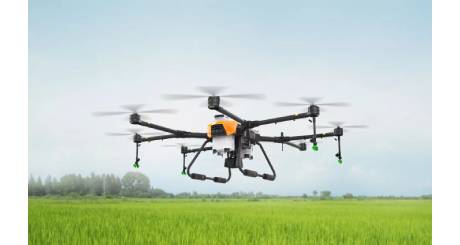In recent years, unmanned aerial vehicles (UAVs) have gained significant popularity across various industries, including agriculture, surveying, mapping, and delivery services. One of the crucial components that enable UAVs to navigate accurately and perform their tasks effectively is the GPS/GNSS module. This article explores the advancements in GPS/GNSS module solutions for UAVs, highlighting the benefits they bring and the key features to consider.

A GNSS (Global Navigation Satellite System) module is a compact electronic device that receives signals from multiple satellite constellations, such as GPS, GLONASS, Galileo, and BeiDou. It provides accurate positioning, navigation, and timing information to UAVs. These modules integrate various components like antennas, receivers, processors, and firmware, enabling precise location tracking and enhancing UAV capabilities.
The latest advancements in GNSS module technology have significantly improved accuracy and reliability for UAV applications. Advanced modules leverage multi-constellation support, enabling UAVs to receive signals from a larger number of satellites. This enhances positioning accuracy, even in challenging environments with obstructed views or high levels of interference.
RTK technology has revolutionized UAV navigation by providing centimeter-level positioning accuracy. Some advanced GNSS modules now offer built-in RTK support, eliminating the need for external RTK receivers. This feature enables UAVs to achieve highly precise and reliable positioning, crucial for applications like precision agriculture and aerial surveying.
To further enhance positioning accuracy and stability, GNSS modules now integrate sensor fusion capabilities. By combining data from additional sensors like inertial measurement units (IMUs), barometers, and magnetometers, these modules compensate for GNSS signal interruptions and enable seamless navigation in areas with poor satellite visibility or during temporary signal losses.
Efficiency is essential for UAV operations, as longer flight times and smaller payloads are often desired. Advanced GNSS modules are designed with low power consumption in mind, optimizing battery life and allowing UAVs to fly for extended periods. Additionally, these modules are compact and lightweight, ensuring minimal impact on the overall weight and size of the UAV system.
To enable seamless integration into UAV systems, modern GNSS modules offer enhanced connectivity options. They provide standardized interfaces like UART, I2C, and USB, allowing easy communication with flight controllers and other onboard devices. This enables efficient data exchange and synchronization, improving overall system performance and compatibility.
Apart from accurate positioning, advanced GNSS modules offer additional features to enhance UAV performance. These include:
a. Precise Timing: GNSS modules provide precise timing information, essential for synchronizing operations in multi-UAV scenarios or applications requiring time-sensitive actions.
b. Geofencing: By defining virtual boundaries, geofencing features allow UAV operators to restrict flight areas or trigger specific actions when the UAV enters or exits designated zones. This improves safety and compliance with regulations.
c. Velocity Estimation: Some GNSS modules offer velocity estimation capabilities, enabling UAVs to calculate their speed and direction accurately. This feature is useful for applications requiring consistent and controlled movement.
In addition to accuracy and reliability, advanced GNSS modules for UAVs incorporate robust signal processing and anti-jamming capabilities. These features are crucial in environments where signal interference or intentional jamming attempts may occur.
Signal tracking algorithms in GNSS modules have been optimized to maintain a strong lock on satellite signals, even in situations with weak or obstructed signals. This ensures uninterrupted positioning information, allowing UAVs to navigate with precision and confidence.
The advancements in GPS/GNSS module solutions have greatly improved the capabilities and reliability of UAVs. With features like multi-constellation support, RTK integration, sensor fusion, low power consumption, and advanced positioning functionalities, these modules enable UAVs to navigate accurately, even in challenging environments. As technology continues to advance, we can expect further innovations in GNSS modules, further enhancing the efficiency and performance of UAVs across various industries.